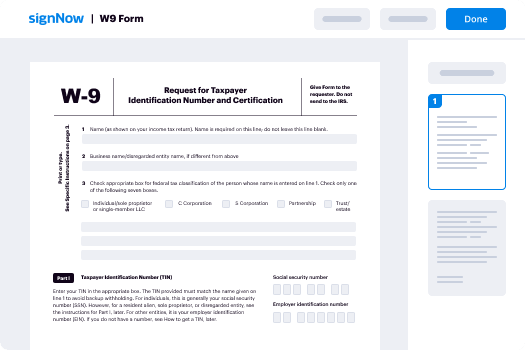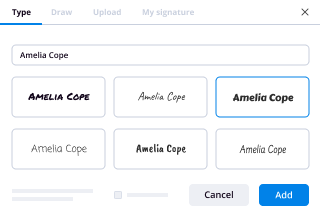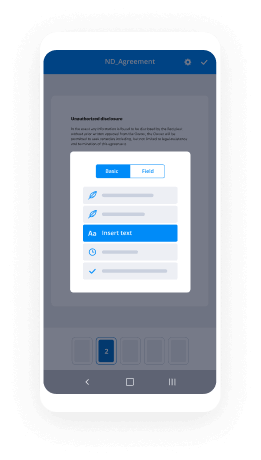Prepared by U.S. Legal Forms, Inc.
Copyright 2016 - U.S. Legal Forms, Inc.
CIRCUIT COURT
STATE OF MICHIGAN
DIVORCE PACKAGE
MINOR CHILDREN
With or Without Property
Control Number MI–006-D
This packet contains the following:
1. Information about Divorce
2. Form List
3. Form Explanations
4. Instructions and Steps
5. Checklist
6. Access to Law Summary
You and your spouse must agree to all terms of the divorce to use this packet.
All forms to be filed with the Court must be printed on Bond paper.
- 1 -
INFORMATION ABOUT DIVORCE
1. WHO CAN USE THESE FORMS: You may use this petition form for divorce
only when all of the following facts are true;
(a) There has been a breakdown of the marriage relationship to
the extent that the objects of matrimony have been destroyed and
there remains no reasonable likelihood that the marriage can be
preserved ;
(b) There are minor children of said marriage.
(c) You and your spouse agree on all terms of the divorce.
(d) At least one of the parties to an action for divorce must have
resided in the State of Michigan for at least 180 days immediately prior to
the filing of the complaint and must have resided in the county of filing for
at least 10 days immediately prior to the filing of the complaint.
2. THE BASICS: In a typical divorce, there are basic two requirements that must
be met before you can file for a divorce. Those requirements are below:
(a) You must satisfy the residency requirements.
(b) You must satisfy the no-fault procedures.
3. RESIDENCY REQUIREMENTS: At least one of the parties to an action for divorce
must have resided in the State of Michigan for at least 180 days immediately prior to the
filing of the complaint and must have resided in the county of filing for at least 10 days
immediately prior to the filing of the complaint. There is an exception to this rule,
although it does not apply to divorces contemplated by this package. The exception is
that the residency requirement may be waived if the defendant was born in or is a citizen
of a foreign country and the parties have minor children that are at risk of being taken out
of the U.S.
4. GROUNDS FOR DIVORCE: The only ground upon which a divorce may be granted
in the State of Michigan is that there has been a breakdown of the marriage relationship
to the extent that the objects of matrimony have been destroyed and there remains no
reasonable likelihood that the marriage can be preserved.
5. LEGAL SEPARATION : A judgement of legal separation may be granted in the State
of Michigan upon the same grounds as for a judgement of divorce.
This package does not contain forms for a legal separation.
- 2 -
6. FRIEND OF THE COURT : The agency known as the Friend of the Court was created
to assist the Court in divorce cases. Before adjudication of a domestic relations matter,
the office of the Friend of the Court has the following duties:
(a) To provide an informational pamphlet to each party to a domestic relations
matter explaining:
(i) The procedures of the court and the office;
(ii) The duties of the office;
(iii) The rights and responsibilities of the parties, including
notification that each party to the dispute has the right to meet with
the individual investigating the dispute before that individual
makes a recommendation regarding the dispute;
(iv) The availability of and procedures used in domestic
relations mediation;
(v) The availability of human services in the community;
(vi) The availability of joint custody, and;
(vii) How to file a grievance regarding the office.
(b) To inform the parties of the availability of domestic relations mediation if
there is a dispute as to child custody or parenting time.
(c) To inform the parents of the availability of joint custody if there is a
dispute between the parents as to child custody.
(d) To investigate all relevant facts, and to make a written report and
recommendation to the parties and to the court regarding child custody
and/or parenting time if there is a dispute as to child custody and/or
parenting time, and domestic relations mediation is refused by either party
or is unsuccessful, or if ordered to do so by the court.
7. ALIMONY/SUPPORT : Since this is an agreed upon divorce, you will decide issues of
alimony. The forms assume that no alimony will be paid and is waived but you may add
provisions for alimony if you desire. In a contested case, the court may require either
party to pay alimony for the suitable maintenance of the adverse party, to pay such sums
as shall be deemed proper and necessary to conserve any real or personal property owned
by the parties or either of them, and to pay any sums necessary to enable the adverse
party to carry on or defend the action, during its pendency.
8. DISTRIBUTION OF PROPERTY: Since this is an agreed upon divorce, the parties
will agreed to property distributions. Michigan is an equitable distribution state. In a
contested case, this means that the court will divide the property of the parties as it deems
equitable under the particular circumstances of the case. All of a party's property is
subject to division if the court determines that the other party contributed to the
acquisition, improvement, or accumulation of the property.
- 3 -
9. NAME CHANGE: Whenever a decree of divorce is granted, the Court may restore to
the wife her birth name, or the surname she legally bore prior to her marriage to the
husband in the divorce action, or allow her to adopt another surname if the change is not
sought with any fraudulent or evil intent.
10. WAITING PERIOD: No proofs or testimony shall
be taken in any case for divorce until the expiration of 60 days from the time of filing the
bill of complaint, except where the cause for divorce is desertion, or when the testimony
is taken conditionally for the purpose of perpetuating such testimony. In every case where
there are dependent minor children under the age of 18 years, no proofs or testimony
shall be taken in such cases for divorce until the expiration of 6 months from the day the
bill of complaint is filed.
11. CHILD SUPPORT: The State of Michigan has
established Child Support Guidelines to be used in calculating the correct amount of child
support to be paid. The court must follow the Guidelines, whether or not the parties
agree on the amount of support, except where it has an "unjust or inappropriate" result.
The court may enter an order that deviates from the Guidelines if the court determines
from the facts of the case that application of the child support formula would be unjust or
inappropriate and sets forth in writing or on the record all of the following:
(a) The support amount determined by application of the child support
formula.
(b) How the support order deviates from the child support formula.
(c) The value of property or other support awarded in lieu of the payment of
child support, if applicable.
(d) The reasons why application of the child support formula would be unjust
or inappropriate in the case.
12. CHILD CUSTODY: In custody disputes between parents, the parents shall be advised
of joint custody. "Joint custody” means an order of the court in which one or both of the
following is specified:
(a) That the child shall reside alternately for specific periods with each of the
parents.
(b) That the parents shall share decision-making authority as to the important
decisions affecting the welfare of the child.
At the request of either parent, the court shall consider an award of joint custody, and
shall state on the record the reasons for granting or denying a request. The court shall
determine whether joint custody is in the best interest of the child by considering the
following factors:
- 4 -
(a) The love, affection, and other emotional ties existing between the parties
involved and the child.
(b) The capacity and disposition of the parties involved to give the child love,
affection, and guidance and to continue the education and rearing of the
child in his or her religion or creed, if any.
(c) The capacity and disposition of the parties involved to provide the child with
food, clothing, medical care or other remedial care recognized and
permitted under the laws of this state in place of medical care, and other
material needs.
(d) The length of time the child has lived in a stable, satisfactory environment,
and the desirability of maintaining continuity.
(e) The permanence, as a family unit, of the existing or proposed custodial home
or homes.
(f) The moral fitness of the parties involved.
(g) The mental and physical health of the parties involved.
(h) The home, school, and community record of the child.
(i) The reasonable preference of the child, if the court considers the child to be of
sufficient age to express preference.
(j) The willingness and ability of each of the parties to facilitate and encourage a
close and continuing parent-child relationship between the child and the
other parent or the child and the parents.
(k) Domestic violence, regardless of whether the violence was directed against or
witnessed by the child.
(l) Whether the parents will be able to cooperate and generally agree concerning
important decisions affecting the welfare of the child.
(m) Any other factor considered by the court to be relevant to a particular child
custody dispute.
If the parents agree on joint custody, the court shall award joint custody unless the court
determines on the record, based upon clear and convincing evidence that joint custody is
not in the best interests of the child.
If the court awards joint custody, it may include in its award a statement regarding when
the child shall reside with each parent, or may provide that physical custody be shared by
the parents in a manner to assure the child continuing contact with both parents. During
the time a child resides with a parent, that parent shall decide all routine matters
concerning the child.
If there is a dispute regarding residency, the court shall state the basis for a residency
award on the record or in writing.
Joint custody shall not eliminate the responsibility for child support. Each parent shall be
responsible for child support based on the needs of the child and the actual resources of
each parent. If a parent would otherwise be unable to maintain adequate housing for the
child and the other parent has sufficient resources, the court may order modified support
payments for a portion of housing expenses even during a period when the child is not
- 5 -
residing in the home of the parent receiving support. An order of joint custody, in and of
itself, shall not constitute grounds for modifying a support order.
For more information, see the Michigan Divorce Law Summary.
- 6 -
FORMS LIST
The forms included in this package are:
1. Complaint for Divorce ( MI-536D )
2. Answer to Complaint for Divorce. ( MI-803D )
3. Verified Statement ( MI-FOC-23 )
4. Employer’s Disclosure of Income and Health Insurance Information ( MI-
FOC-22 )
5. Employment Status Disclosure ( MI-FOC-22B )
6. Child Care Verification ( MI-FOC-39E )
7. Marital Settlement Agreement ( MI-DO-11 )
8. Judgment of Divorce ( MI-537D )
9. Sample Record of Divorce or Annulment ( MI-808D )
10. Notice of Hearing ( MI-809D )
11. Notice of Entry of Judgment ( MI-810D )
12. Summons ( MI-MC-01 )
The Verified Statement is available from the Friend of the Court. Bring the completed sample
with you to your meeting with the Friend of the Court to assist you in completing this form.
You will need to obtain from the Clerk of Court the Record of Divorce or Annulment . Bring the
completed sample with you to the final hearing to assist you in completing this form.
- 7 -
FORM EXPLANATIONS
All forms included in this package, or needed, are identified below.
1. Complaint for Divorce ( MI-536D ) - The Complaint for Divorce is the
document in which you are asking the court to grant your divorce along with any other
relief requested.
2. Answer to Complaint for Divorce ( MI-803D ) – This document is used
by the Defendant to acknowledge receipt of the Complaint for Divorce and to enter an
appearance. It is further used to acknowledge that the allegations contained in the
Complaint for Divorce are true and to request that the Court grant a Decree of
Dissolution of Marriage pursuant to the terms of Petitioner's Petition at any time and
without further notice to Respondent. It also states to the Court that the Parties have
entered into a Marital Settlement Agreement. This form must be dated and signed
AFTER the Complaint and other documents are filed.
3. Verified Statement ( MI-FOC-23 ) – This document is used to provide
basic information about you and your family to the Friend of the Court and, if necessary,
to enforce your Judgment of Divorce. A sample has been provided to you to assist you in
completing this form. Be sure to bring the completed sample with you to your meeting
with the Friend of the Court. You are not required to complete this form, however, since
the Friend of the Court is usually used in cases in which alimony is requested or where
there are minor children involved.
4. Employer’s Disclosure of Income and Health Insurance Information
( MI-FOC-22 ) – This form is used to provide the Court with verified information from a
party’s employer regarding income and health insurance available to the employee.
5. Employment Status Disclosure ( MI-FOC-22B ) – This form is used to
provide the Court with information regarding the parties’ current employment.
6. Child Care Verification ( MI-FOC-39E ) – This form is used to verify
child care costs incurred by the parties.
7. Marital Settlement Agreement ( MI-DO-11 ) – This document provides
for the final distribution of any assets and debts of the parties, provides for support of any
children of the marriage and any other agreements reached between the parties.
- 8 -
8. Judgment of Divorce ( MI-537D ) – This document grants the divorce
and any other relief requested.
9. Record of Divorce or Annulment ( MI-808D ) – This is an
administrative form used by the Court and state government to keep track of divorces. A
sample has been provided to you to assist you in completing this form. Be sure to bring
the completed sample with you to the final hearing.
10. Notice of Hearing ( MI-809D ) – This form is for you to notify the
Defendant for the hearing on the Complaint.
11. Notice of Entry of Judgment ( MI-810D ) – This form is for you to
provide a copy of the entered and signed Judgment to the Defendant.
12. Summons ( MI-MC-01 ) : This document is the official notification to
your spouse that divorce proceedings have begun. It is delivered to your spouse along
with the Petition .
- 9 -
INSTRUCTIONS AND STEPS
Note: If a form con tains a space for the signature of a Notary Public, it must be signed by you
(and if necessary by your spouse) in front of a Notary Public, who must notarize the document.
Prepare an original and several copies of each of your completed documents. Your spouse
should have a copy of everything you file, stamped “filed” by the clerk. You should keep copies
and the court must have originals.
STEP 1: The filing party (Plaintiff) should complete and file the Complaint for Divorce
(MI-536D). A fil ing fee is paid.
STEP 2: The Plaintiff should send to the Defendant the Answer and Waiver form (MI-
803D), along with a copy of the previously filed Complaint (MI-536D) . The
Defendant should complete the Answer and Waiver form (MI-803D) and return it
to the Plaintiff, who should then file the Answer and Waiver (MI-803D) with the
Clerk of Court.
STEP 3: The Plaintiff should next complete the sample Verified Statement (MI-FOC-23) .
This form will assist you in your meeting with the Friend of the Court and will
assure you that you have all of the needed information to correctly fill out the
Verified Statement (MI-FOC-23) form provided to you by the Friend of the Court.
STEP 4: Each party should complete and file with the Court completed copies of the
Employer’s Disclosure of Income and Health Insurance Information forms (MI-
FOC-22, if applicable) and Employment Status Disclosure (MI-FOC-22B).
STEP 5: The parties’ should next have the childcare provider complete the bottom half of
the Child Care Verification form (MI-FOC-39E) . Once completed, this form
should then be filed with the Court.
STEP 6: Both parties should complete the Marital Settlement Agreement (MI-DO-11) ,
making certain to agree to all of the terms contained therein. This document
should then be filed with the Clerk of Court with the Judgment .
STEP 7: The Plaintiff should next complete the Judgment of Divorce (MI-537D) and
provide the Defendant with a completed copy so that he or she may review it prior
to the final hearing and approve its contents. You must attach the original of the
- 10 -
Separation Agreement (MI-DO-11) to the Judgment (MI-537D), and the
Judgment (MI-537D) and Separation Agreement (MI-DO-11) must be signed by
you and your spouse.
STEP 8: Contact the Clerk of Court to schedule a date for the final hearing. At the final
hearing, present the Judgment of Divorce (MI-537D) with Agreement (MI-DO-
11) attached to the presiding Judge for his approval and signature. Make three or
more copies of the Judgment (MI-537D) with Agreement (MI-DO-11) attached
and take to the hearing with you.
STEP 9: Send the Notice of Hearing (MI-809D) to the Defendant advising the Defendant
when you intend to present the Judgment (MI-537D) to the Court. File the
original Notice of Hearing (MI-809D) with the Clerk.
STEP 10: A sample Record of Divorce or Annulment (MI-808D) has been provided for you.
After the Judgment of Divorce (MI-537D) has been signed and filed, the Record
of Divorce or Annulment form (MI-808D) must be completed for the Clerk of
Court. Complete the sample Record of Divorce or Annulment (MI-808D) and
bring this form with you to the final hearing to assist you in completing the form
provided by the Clerk of Court.
STEP 11: Obtain certified copies of the Judgment (MI-537D) and provide one to the
Defendant. The certified copy is proof of the divorce. Include the Notice of
Entry (MI-810D) with the copy and file the Notice of Entry (MI-810D) with the
clerk.
Notes: No Divorce may be final until thirty (30) days have elapsed between the date the
Petition is filed and the date the Decree is signed and filed with the Clerk.
- 11 -
CHECKLIST
Complaint for Divorce (MI-536D) completed and filed with Clerk of Court.
Filing fee paid.
Copy of Complaint for Divorce (MI-536D) and Answer and Waiver form (MI-
803D) provided to Defendant. Defendant completes Answer and Waiver (MI-
803D) and returns form to Plaintiff.
Plaintiff files Answer and Waiver (MI-803D) with Clerk of Court.
Verified Statement (MI-FOC-23) completed by Plaintiff and used to assist in
completion of Verified Statement (MI-FOC-23) provided to Plaintiff by Friend of
Court.
Each party completes and files copies of the Employer’s Disclosure of Income
and Health Insurance Information forms (MI-FOC-22, if applicable) and
Employment Status Disclosure (MI-FOC-22B).
The parties’ have child care provider complete bottom half of Child Care
Verification form (MI-FOC-39E) . Once completed, form then filed with Court.
Both parties complete Separation and Property Settlement Agreement (MI-DO-
11) and file document with Clerk of Court with the Judgment of Divorce (MI-
537D).
Judgment of Divorce (MI-537D) completed and copy provided to Defendant for
his or her inspection and approval.
Final hearing date obtained from Clerk of Court. Notice of Hearing (MI-809D)
mailed to Defendant.
Judgment (MI-537D) with Separation and Property Settlement Agreement (MI-
DO-11) attached presented to Court at final hearing.
Sample Record of Divorce or Annulment (MI-808D) completed and brought to
final hearing to assist in completing Record of Divorce or Annulment (MI-808D)
provided by Clerk of Court.
Certified copy of Judgment (MI-537D) and Notice of Entry (MI-810D) provided
to the Defendant.
- 12 -
NOTE ABOUT COMPLETING THE FORMS
The forms in this packet contain “form fields” created using Microsoft Word. “Form fields”
facilitate completion of the forms using your computer. They do not limit you ability to print the
form “in blank” and complete with a typewriter or by hand.
If you do not see the gray shaded form fields, go the View menu, click on Toolbars, and then
select Forms. This will open the forms toolbar. Look for the button on the forms toolbar that
resembles a shaded letter “a”. Click in this button and the form fields will be visible.
To complete the forms click on the gray shaded areas and type the information. For the
separation agreement complete the gray shaded areas and also make any other changes or
additions to resolve all issues.
Some forms are locked which means that the content of the forms cannot be changed unless the
form is unlocked. You can only fill in the information in the fields. If you need to make any
changes in the body of the form, it is necessary for you “unlock” or “unprotect” the form. IF
YOU INTEND TO MAKE CHANGES TO THE CONTENT, DO SO BEFORE YOU
BEGIN TO FILL IN THE FIELDS. IF YOU UNLOCK THE DOCUMENT AFTER YOU
HAVE BEGUN TO COMPLETE THE FIELDS, WHEN YOU RELOCK, ALL
INFORMATION YOU ENTERED WILL BE LOST. To unlock, click on “Tools” in the
Menu bar and then selecting “unprotect document”. You may then be prompted to enter a
password. If so, the password is “uslf”. That is uslf in lower case letters without the
quotation marks . After you make the changes relock the document before you begin to
complete the fields. After any required changes relock the form, then click on the first form field
and enter the required information. You will be able to navigate through the document from
form field to form field using your tab key. Tab to a form field and insert your data. If you
experience problems, please let us know.
- 13 -
LAW SUMMARY
You may access the law summary for your State by using the link below:
http://secure.uslegalforms.com/lawsummary/MI/MI-006-D.htm
- 14 -
DISCLAIMER
These materials were developed by U.S. Legal Forms, Inc. based upon statutes and forms for the
State of Michigan. All Information and Forms are subject to this Disclaimer: All forms in this
package are provided without any warranty, express or implied, as to their legal effect and
completeness. Please use at your own risk. If you have a serious legal problem, we suggest that
you consult an attorney. U.S. Legal Forms, Inc. does not provide legal advice. The products
offered by U.S. Legal Forms (USLF) are not a substitute for the advice of an attorney.
THESE MATERIALS ARE PROVIDED "AS IS" WITHOUT ANY EXPRESS OR IMPLIED
WARRANTY OF ANY KIND INCLUDING WARRANTIES OF MERCHANTABILITY,
NONINFRINGEMENT OF INTELLECTUAL PROPERTY, OR FITNESS FOR ANY
PARTICULAR PURPOSE. IN NO EVENT SHALL U. S. LEGAL FORMS, INC. OR ITS
AGENTS OR OFFICERS BE LIABLE FOR ANY DAMAGES WHATSOEVER
(INCLUDING, WITHOUT LIMITATION DAMAGES FOR LOSS OF PROFITS, BUSINESS
INTERRUPTION, LOSS OF INFORMATION) ARISING OUT OF THE USE OF OR
INABILITY TO USE THE MATERIALS, EVEN IF U.S. LEGAL FORMS, INC. HAS BEEN
ADVISED OF THE POSSIBILITY OF SUCH DAMAGES.
THESE FORMS WERE PREPARED FOR STATEWIDE USE. HOWEVER, SOME
COUNTIES OR JUDGES MAY REQUIRE CERTAIN MODIFICATIONS TO THE FORMS
FOR USE IN YOUR PARTICULAR COUNTY AND MAY REQUIRE SPECIAL FORMS
NOT INCLUDED. CHANGES REQUIRED BY PARTICULAR JUDGES ARE NOT
UNCOMMON EVEN IF THE FORMS HAD BEEN PREPARED BY YOUR ATTORNEY.
REGARDLESS, YOU SHOULD BE ABLE TO USE THESE FORMS AND INSTRUCTIONS,
WITH ANY REQUIRED MODIFICATIONS, TO MAKE IT THROUGH THE PROCESS. IF
YOU NEED TO MAKE CHANGES, OR IF SPECIAL FORMS ARE REQUIRED IN YOUR
COUNTY, YOU CAN MAKE THE CHANGES AND REFILE, OR OBTAIN THE SPECIAL
FORMS EITHER FROM THE CLERK OR A CLOSED DIVORCE FILE WHICH YOU CAN
USE AS AN EXAMPLE.
- 15 -
Helpful hints for finishing your ‘No Fault Agreed Uncontested Divorce Package For Dissolution Of Marriage For People With Minor Children Michigan’ online
Are you fed up with the inconvenience of handling paperwork? Look no further than airSlate SignNow, the premier electronic signature solution for both individuals and organizations. Bid farewell to the monotonous procedure of printing and scanning documents. With airSlate SignNow, you can conveniently finalize and sign paperwork on the web. Utilize the powerful features included in this user-friendly and cost-effective platform and transform your approach to document management. Whether you aim to approve forms or gather signatures, airSlate SignNow manages it all seamlessly, requiring only a few clicks.
Follow this comprehensive guide:
- Log in to your account or sign up for a complimentary trial with our service.
- Click +Create to upload a document from your device, cloud storage, or our template repository.
- Open your ‘No Fault Agreed Uncontested Divorce Package For Dissolution Of Marriage For People With Minor Children Michigan’ in the editor.
- Click Me (Fill Out Now) to set up the document on your end.
- Add and designate fillable fields for others (if necessary).
- Proceed with the Send Invite options to request eSignatures from others.
- Download, print your copy, or convert it into a reusable template.
Don’t fret if you need to collaborate with others on your No Fault Agreed Uncontested Divorce Package For Dissolution Of Marriage For People With Minor Children Michigan or send it for notarization—our service has everything you require to accomplish such tasks. Register with airSlate SignNow today and enhance your document management to a new standard!
















